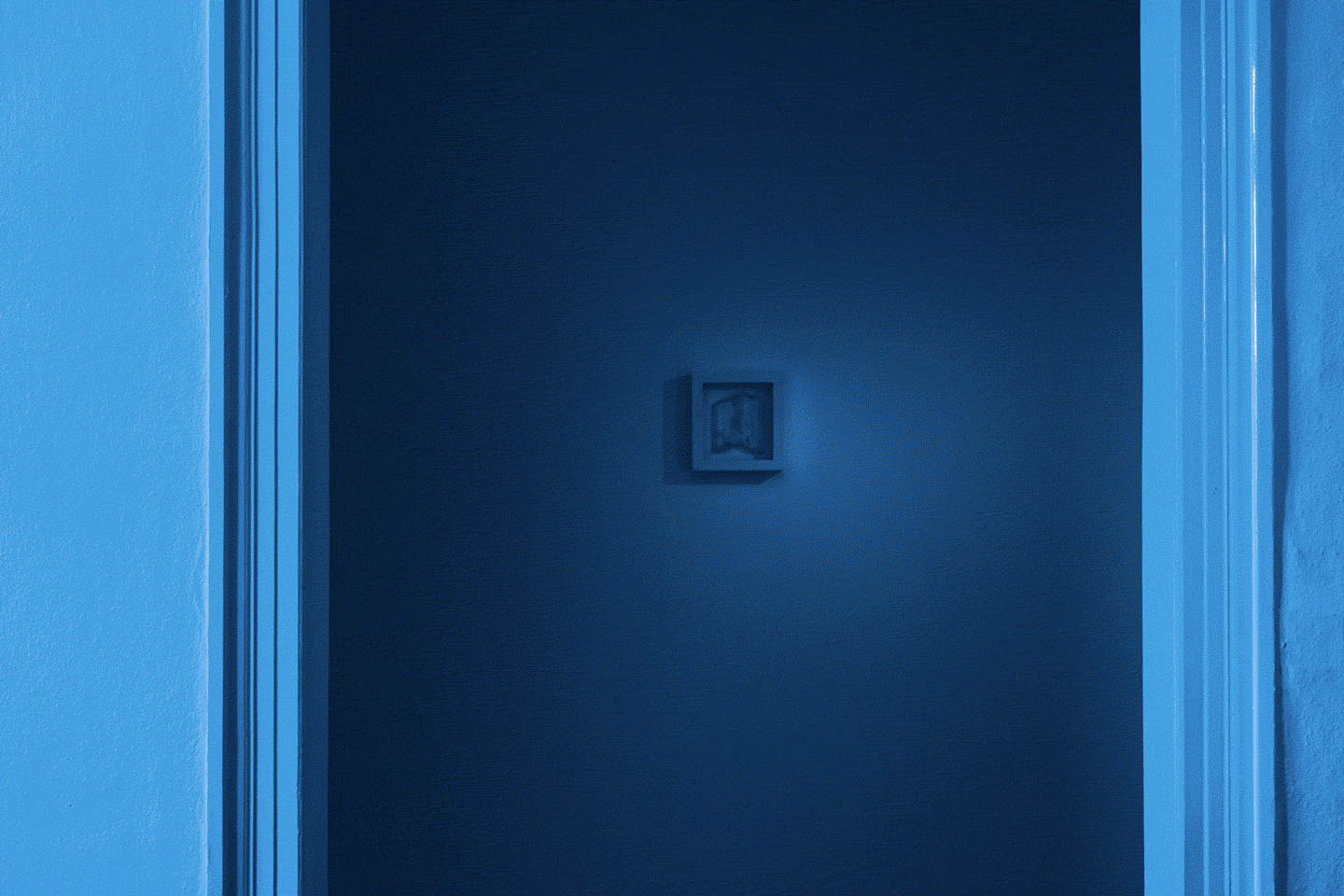If The Hours Were Already Counted
September 18–November 28, 2021
Königstraße 24
59821 Arnsberg
Germany
Hours: Wednesday–Friday 5:30–7pm
T +49 2931 21122
kontakt@kunstverein-arnsberg.de
With If The Hours Were Already Counted, Kunstverein Arnsberg presents the first institutional solo show by Angelika Markul (b. 1977, Szczecin) in Germany. The exhibition focuses on works that create narratives about the origins of life or past cultures and meanwhile bear witness to an imminently inevitable end.
Bathed in yellow, red, and blue light, Markul’s drawings, sculptures, and paintings from the series Tierra del Fuego (2018/2021) open the exhibition. Named after the South American archipelago of Tierra Del Fuego, the works address the vanishment of Patagonian glaciers and millennia-old cultures that once shaped and inhabited this land before being displaced by European settlers and climate change. They draft a speculative history of disappearance and demise as it might be buried under today’s melting ice masses.
The subject takes its starting point with the video work Memory of Glaciers (2017) that traces the origin of all life on Earth. Here, the narrative is introduced by black-and-white footage of the comet 67P/Churyumov-Gerasimenko shot during the Rosetta mission (2004–2016). Alongside the video material taken in space—which in its edited form is more reminiscent of early science fiction than the images’ scientific background—Markul places shots of Patagonia’s glaciers, thus creating a short, poetic story of evolution. Water, as the source of life, becomes the central motif from which both geological bodies are partly made. As protagonists of this story, comet and glaciers, provide insights into a past thousand or even billions of years ago. Both can bring life and death. And so, together with Côme Aguiar’s music, Memory of Glaciers might ultimately be understood as a visual and acoustic symphony of the forces of nature, of the cycle of becoming and passing away.
If The Hours Were Already Counted (2016) also speaks of a seemingly otherworldly place. People in protective suits walk through a crystalline dreamscape like pioneers on another planet. Again, the work is based on footage taken during a scientific expedition: In 2000, miners in the Mexican Naica mine discovered a cave about 300 metres underground with huge crystals up to eleven metres in size. The cave was made accessible to scientists searching for traces of the origin of life on Earth. The documentation of the expedition, published for the first time in Markul’s work, is testament to the immediate experience of the sublime. Wonder and shock is written all over the researchers’ faces, as is the physical exhaustion; with temperatures between 45°–50° C, and up to 100 percent humidity, conditions in the cave are threatening. Cooling overalls and cooling chambers are vital. Markul deliberately kept the footage in black-and-white and thereby refers to Édouard Riou’s famous etchings for Jules Verne’s Journey to the Centre of the World (1864). In an interview the artist describes her fascination with the blurred lines between fiction and reality that emerge here as follows: “What amuses me is that what appears to be fantasy in one era becomes reality and commonplace in another, a delusional speculation.” (ARTMargins, 2017)
Markul’s works always move between the seemingly contrary poles of science and fiction. As ‘science fictions,’ they internalise findings from ecology, geology, archaeology, and astronomy. Again and again, the artist adds mystical and spiritual elements to this context. Her work can ultimately be understood as a homage to the occasionally dark secrets of this Earth.
The artist lives and works in Paris and Warsaw. Her works have been exhibited worldwide in renowned institutions such as the Palais de Tokyo (Paris), the Musée CSW Zamek Ujazdowski (Warsaw), the Jewish Museum (New York), and the National Art Museum of China (Beijing).
With kind support from the Foundation for German-Polish Cooperation; the City of Arnsberg; the district of Hochsauerlandkreis; the Bureau des arts plastiques of the Institut français Germany and the French Ministry of Culture; Sparkasse Arnsberg-Sundern and Veltins. In cooperation with LETO Gallery, Warsaw, and the Polish Institute Dusseldorf.
Curation & text: Lydia Korndörfer


